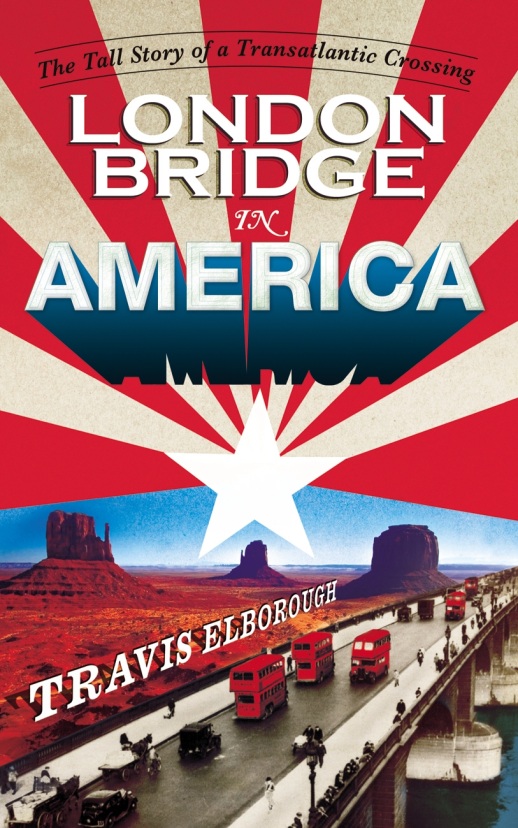A review by Luke Turner.
There’s a vivid image – among many – that stands out from London Bridge In America. Travis Elborough quotes the archeologist R.E.M. Wheeler, “London Bridge was… destined by geography and geology to become the natural focus of the English road system, and London may be described as the parasite of London Bridge.”
This idea that London is at the core of our Island identity and sprawling history runs through Elborough’s engaging book, as different roads and paths unfold across the pages. Half the book a history of the various crossings across the Thames, the rest the story of the the John Rennie -designed bridge making its way across the Atlantic to the Arizonan town of Lake Havasu City.
So as well as a history of the Thames crossing, Elborough delves into the London ice fairs, the hard lives of and immense power wielded by the watermen who, before the new bridge was built monopolised the crossing of the river and risked life and limb shooting the fast currents of the water as it accelerated through the confines of Old London Bridge. Then there’s London docks and shipping, the Industrial Revolution via Rennie, Thomas Telford, James Watts and other engineers bringing their their new-fangled methods to the challenge of spanning the Thames. Coming up to date, Elborough illuminates the transatlantic journey of thousands of tonnes of granite via 60’s Anglophilia, not just in the Beatles but musicals, Mary Poppins and Herman the Herman’s no 1 US hit ‘I’m Henry The Eighth I Am’.
London Bridge In America is as rich in characters as it is history. I never knew, for instance, that Rights Of Man author Thomas Paine was a pioneering iron bridge engineer. Then there’s Thomas Telford, who’d hold court in the Salopian Coffee House, bringing in such business that the owner was distraught when he left. Or there’s the tale of Arthur Ferguson, a con artist who made a respectable wedge convincing various gullible tourists that he was selling them various landmarks in Britain and America. It’s his story that debunks one of the great myths used to sneer across the pond at our uncouth brethren, namely that they accidentally bought London Bridge thinking it was the more exciting Tower Bridge, just upstream.
The 1967 purchase was made by chilli-guzzling Cornelius Vanderbilt Wood Jnr who, along with chainsaw magnate Robert P McCulloch – every American duo needs a straight man – had built the settlement of Lake Havasu City in the Arizona desert. Due to an unfortunate build-up of muck in the lake, that town now needed a channel and a bridge to cross it. As much as a history of the bridge, this part of the book is a look at the differences between the two great English speaking nations, and their changing relationship over the years, the Worsted-suited post-war civil servants from the Corporation Of London meeting the swashbuckling American pioneers. Nowadays, the state of the special relationship can perhaps be seen in how the ‘English Village’ built next to the bridge in Arizona is becoming dilapidated and unloved. English accents and assumptions of an old country where everyone must know the Queen are no longer the currency they once were. We’d be hard pressed to sell the Americans another bridge.
Is there a sense that in today’s rather boring concrete span, something has been lost? Elborough wisely makes no judgement, and as anyone who has walked across London bridge will know, such rueing nostalgia is misplaced. The endlessly rushing brown water of the Thames gives the London sky colours and shades that are never seen from the land, but from Bridge seem vivid as the organism of London that continues to grow and stretch and breathe around it.
London Bridge in America is published by Jonathan Cape and is out now.
